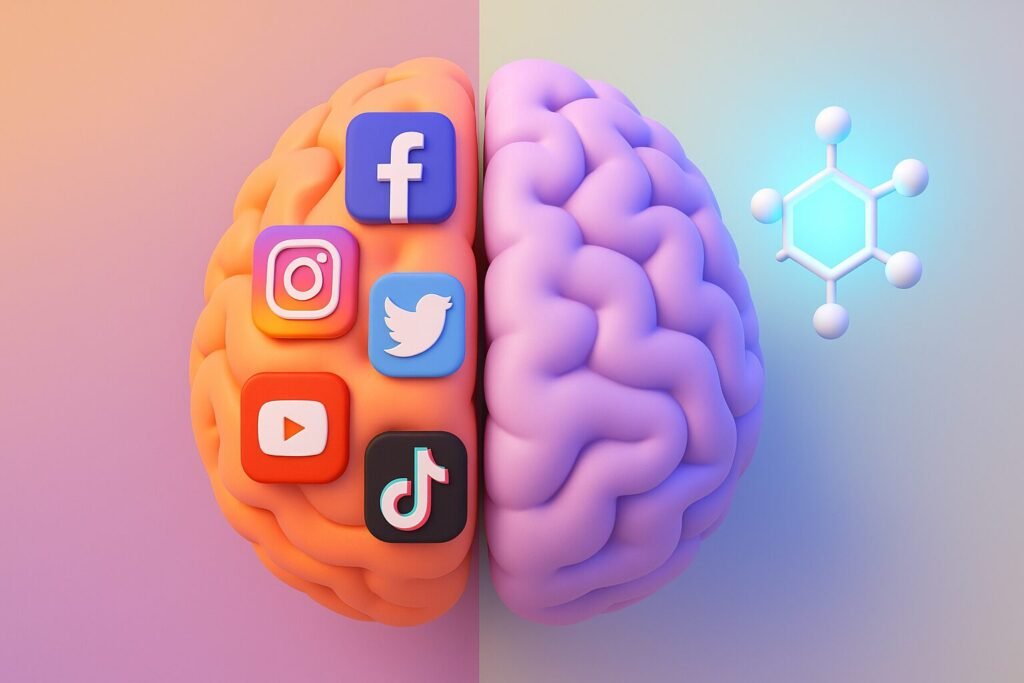
In the late 2010s, dopamine detoxing or fasting emerged as the latest scientific-sounding wellness trend. But what is a dopamine detox? The exact definition of a dopamine detox has always been somewhat fluid. Some practitioners recommend abstaining from eating, talking, using the internet, watching TV, playing video games, and consuming alcohol, nicotine, or other drugs and claim that a detox will reset dopamine levels. Others, like psychologist Cameron Sepah, the author of “The Definitive Guide to Dopamine Fasting 2.0,” maintain that the practice is not actually about reducing dopamine, but instead is a catchy name for a cognitive behavioral therapy-based technique to help people reduce compulsive behaviors.
Despite Sepah’s assertions, the popularization of the term has nonetheless spawned various podcasts and books explaining how to do a dopamine detox and supplements to help people “optimize dopamine,” to the exasperation of many scientists who have spent their entire careers studying this multifaceted molecule. It’s not that researchers are necessarily opposed to any of the suggested behaviors: taking a break from activities like scrolling through social media, drinking alcohol, or binge-watching reality TV could even be helpful for many people. However, they argue that it’s incorrect to present dopamine as the underlying agent of the potential benefits for well-being.
Talia Lerner, a neuroscientist at Northwestern University, explains that the concept may be appealing because it builds on ancient practices of abstinence found in religious traditions like Judaism, Hinduism, Christianity, Islam, and Buddhism. But she also warns that the phrase “dopamine detox” can mislead people about how the brain actually works. Dopamine is not simply a pleasure chemical; its circuitry and functions are extremely complex. Describing it in simplistic terms risks confusing public understanding.
Dopamine: From Intermediate Molecule to Reward Signaler
Initially, dopamine was thought to be just an intermediate molecule in the conversion of tyrosine into adrenaline and noradrenaline. But in the 1950s, it was recognized as a neurotransmitter in its own right, crucial for motor function. By 1961, dopamine precursor therapy (L-DOPA) was being trialed for Parkinson’s disease.

In the 1970s and 1980s, dopamine gained fame as the brain’s reward chemical. Rats would enthusiastically press levers to receive small electric jolts to dopaminergic regions of the brain. Schultz and colleagues later discovered that dopaminergic neurons fired not at the reward itself but at cues predicting the reward. If the expected reward didn’t appear, the neurons went silent. This gave rise to the reward prediction error theory: dopamine doesn’t signal pleasure but the difference between expected and actual outcomes.
But even in these early studies, there was variability in how neurons responded, indicating more nuance than the reward model alone could explain.
A Complex System with Multiple Functions
Despite dopamine’s popular image, it is far from a simple molecule. Only about 400,000-600,000 dopamine-producing neurons exist among 80 billion total neurons in the human brain. Yet, these few cells send signals widely across the brain, modulating movement, attention, motivation, and emotion.
Stephanie Borgland of the University of Calgary highlights that dopamine’s function depends on its projection site. For instance, dopamine in some brain areas motivates effort for reward, while in others, it relates to aversion. Some dopamine neurons even release other neurotransmitters.
Talia Lerner notes that dopamine may help encode general predictions between cues, not just rewards. Advances in neuroscience have led to the classification of dopamine neurons based on gene expression, with researchers now identifying five dopamine receptor subtypes and their distinct dynamics.
Yet the system’s full picture remains elusive. Other neurotransmitters, such as serotonin, orexin, and endogenous opioids, interact with dopamine to influence behavior. Thus, the idea of “resetting dopamine” by abstaining from Instagram or sugar lacks scientific grounding.
Can Dopamine Detox Actually Rewire Your Brain?
Probably not. As Borgland explains, cutting out a behavior may stop reinforcement temporarily but doesn’t erase the underlying habit. Long-term brain changes take time and new learning. In addiction research, even after extended abstinence, drug-related brain alterations persist.
Worse, some proponents of dopamine detox might take the idea too far. Nandakumar Narayanan, a neurologist at the University of Iowa, warns of the dangers of pharmacologically depleting dopamine. As someone who treats Parkinson’s patients, he emphasizes that interfering with dopamine levels medically can have serious consequences.
Narayanan also points to the larger issue of pseudoscience spreading faster than peer-reviewed research. He stresses that public health recommendations should rely on rigorous evidence, not catchy trends and untested supplements.
Final Toughts: Change Requires More Than a Catchy Name
The dopamine detox trend might help spark reflection on compulsive behaviors and create a useful window for habit change. But its underlying claims don’t hold up to neuroscientific scrutiny.
True behavior change comes from intentional rewiring through repeated actions, cognitive awareness, and time, not from briefly abstaining from stimulation. While taking occasional breaks from screens or processed snacks may improve wellbeing, it likely has little to do with altering dopamine.
Instead of fearing dopamine, we should strive to understand it in its biological context. As Lerner puts it, dopamine isn’t inherently good or bad; it’s a crucial player in how we learn, adapt, and navigate the world. But it’s not a button you can press, or detox.





